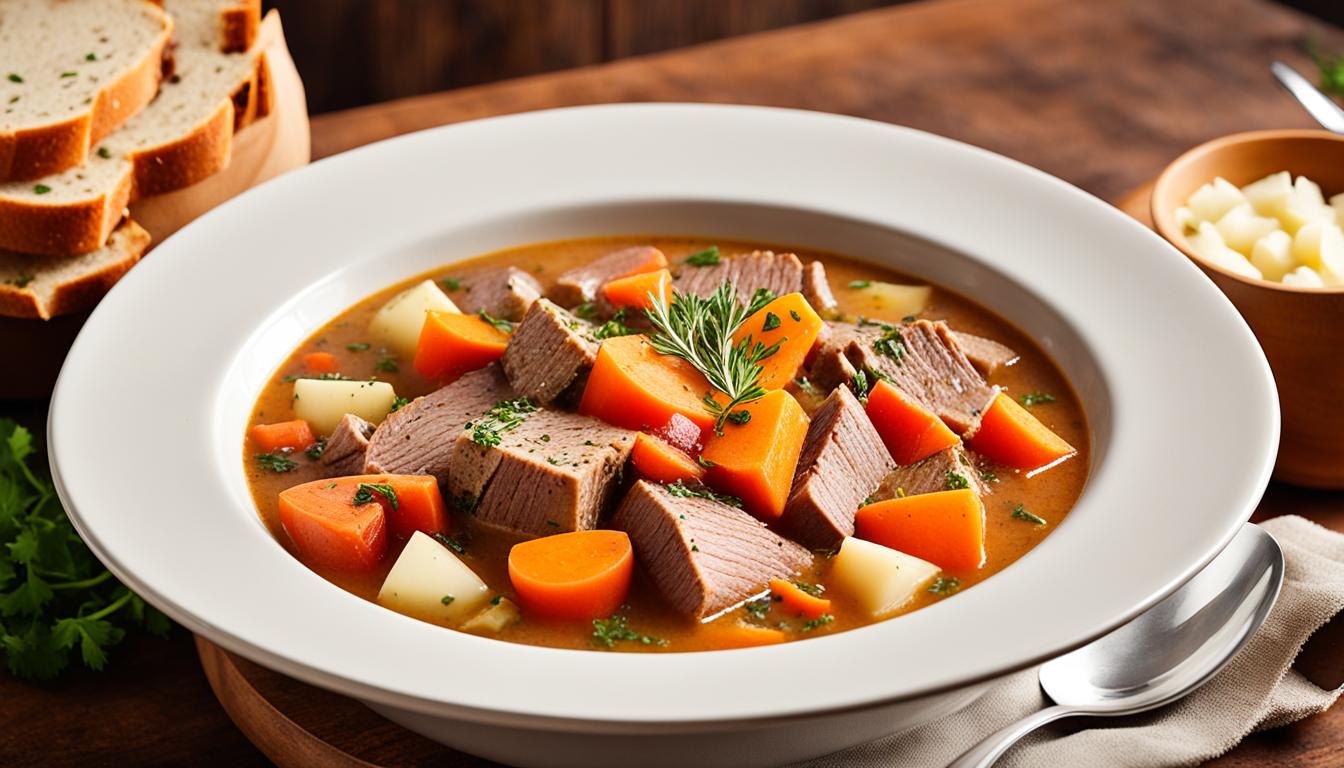A Food Lover’s Guide to the Best Cuisine in Iceland!
Have you ever wondered what delicious foods you could find in Iceland? Its cuisine combines old and new tastes in an exciting way. There’s plenty of fresh seafood and lamb ready to make your taste buds dance1. Plus, they cook with the power of the earth through geothermal energy. What more could you ask for in a food adventure?
Key Takeaways
- Discover the rich history and evolution of Icelandic cuisine, from traditional preservation methods to modern culinary innovations.
- Explore the abundance of fresh, locally sourced ingredients that define the Icelandic food landscape, including seafood, lamb, dairy, and produce.
- Uncover the unique cultural influences and unique cooking techniques that make Icelandic cuisine so distinctive and captivating.
- Learn about the vibrant food scene in Reykjavik, from trendy restaurants to iconic street food vendors.
- Gain insights into the growing popularity of Icelandic cuisine on the global stage and its potential to become a must-visit destination for food lovers.
An Introduction to Traditional Icelandic Cuisine
Iceland has unique traditional food because of its remote island. It uses limited resources and the cold climate. These have led to creative ways to keep food for survival2. Fishing helped Iceland go from poor to rich. Now, the people eat fish about twice a week. Even more, than half eat fish oil often.
*Fermented shark*, or *hákarl*, is a popular old Icelandic food. This dish is made from the Greenland shark. It’s been made this way for a long time due to the cold weather and low salt. Iceland’s food is simple but tasty. They also eat *smoked lamb* and other *preserved meats* in winter.
*Stockfish* is another favorite, lasting for years. Though not as common now, it’s still liked. It used to take weeks to make but now, it’s faster. Bread was rare because grains are hard to grow in Iceland. So, bread was only for the rich. However, they have special breads like *flatkaka* and *laufabraud* from long ago.
There are about 300,000 people in Iceland, mostly in Reykjavik. They love lamb and let sheep roam free. Skyr is a favored dairy, eaten every day as a dish or treat. The famous hot dog, “pylsur,” is made from lamb, pork, and beef.
Iceland is known for its unique ways to keep and prepare food. These include fermenting and preserving. Today, these old methods are still important to Icelandic food. People from all over are learning about and trying Icelandic foods.
The Icelandic cuisine guide: Where to Eat in Reykjavik

In Reykjavik, the capital city of Iceland, you have many places to choose from for eating3. There are fancy *fine dining* spots and also places that won’t cost as much to enjoy3.
*Dill Restaurant* is very special because it was the first in Iceland to get a Michelin star. It’s a great place for anyone who loves *fine dining*3. You should also check out *ÓX*; it’s rare because it’s one of only two Michelin-starred places in Reykjavik3.
*Reykjavik* is full of places where you can enjoy *Icelandic food*. *The Fish Company* lets you try dishes from not just Iceland but also from places like France and Japan3. *Matarkjallarinn (Food Cellar)* offers a secret meal for six, plus there’s always live music3.
If you’re looking for something more affordable, check out *Grillmarkaðurinn (The Grill Market)*. They use local ingredients for their meals, making them true to *Icelandic cuisine*3. Or try *Kopar Restaurant*, which gives you a view of the harbor while you eat3.
To really get into *Icelandic dining*, visit places like *Fjörukráin (The Viking Village)* and *Matur og Drykkur*. They’re top choices for classic *Icelandic dishes*3.
If you’re vegetarian or vegan, you’ll find many options in *Reykjavik*. These diets are becoming more popular in Iceland, so finding food you can enjoy is easier4.
Don’t miss the chance to visit *Reykjavik’s* cafes and bakeries. They are perfect for a break and to taste things like *Icelandic rye bread* and *Icelandic ice cream*4.
For a fun time during *happy hour* in Reykjavik, there are lots of bars to choose from. You can try local drinks or cocktails. There’s something for everyone in *Reykjavik*4.
*Reykjavik’s* food scene has it all – fancy places, choices for every budget, traditional dishes, vegetarian meals, and cozy cafes. It’s a dream for anyone who loves to eat, making it a top spot in Iceland5.
Conclusion
Icelandic cuisine mixes old and new flavors in exciting ways. Reykjavik, with over 350 restaurants, shows off this mix well6. There, dinner usually happens from 6 to 8 PM, with 7 PM being most common6.
Local chefs in Reykjavik are making amazing food. They are pulling New Nordic and old Icelandic dishes to new levels6. These chefs love using local stuff. This shows their love for their country and their food6. You can try weird old dishes like sour ram’s testicles and fermented shark, or taste new takes on old recipes, each showing off Iceland’s food story6.
If you visit, try the Reykjavik Food Walk or top eateries on Laugavegur and its byways6. These are great ways to get to know Icelandic food6. So, as a food lover, I say dive into Icelandic cuisine and Icelandic food culture. You’ll find flavors and traditions that make Iceland special6.







